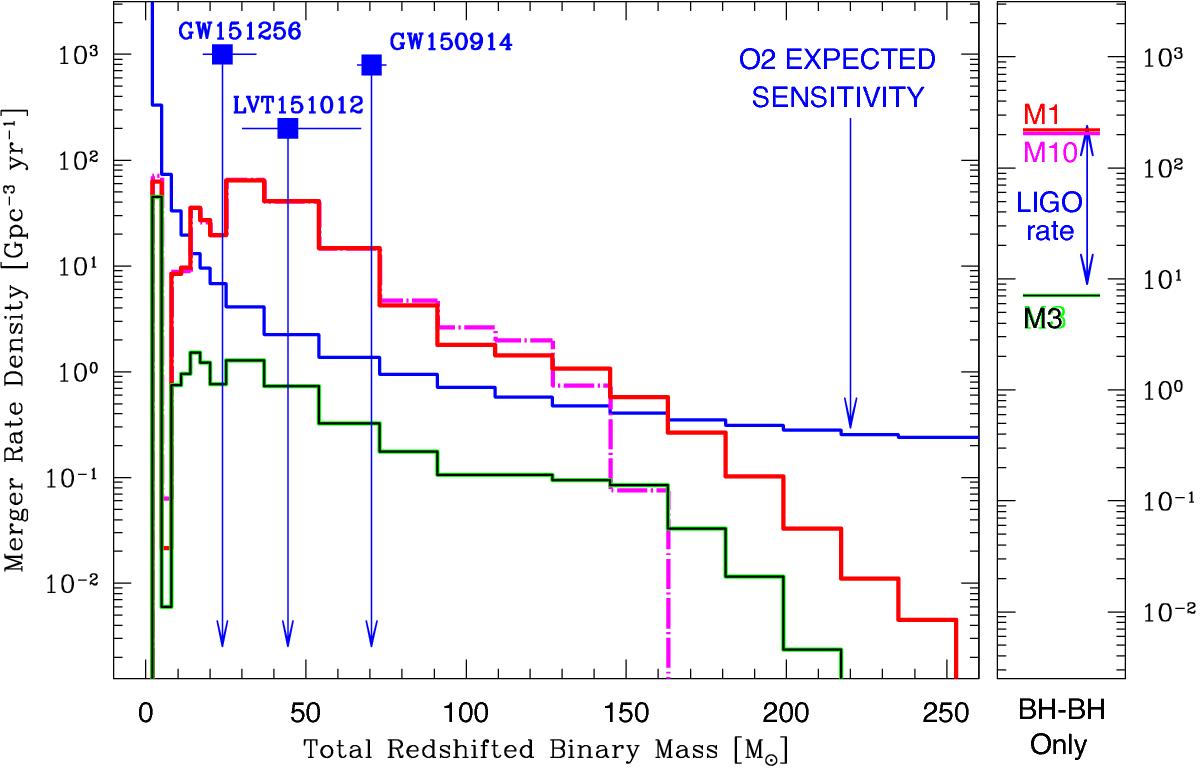Fig. 5

Left panel: observer frame (redshifted) total merger mass distribution for our models: with (M10; magenta broken line) and without (M1; red solid line) pair-instability pulsation supernovae and pair-instability supernovae included. The fiducial O2 LIGO upper limits are marked; the most likely detections are expected when our models are above these upper limits. We note that both models are hardly distinguishable by total merger mass with O2 observations, despite the fact that more massive BH-BH mergers are produced in model M1. The two detections and the next loudest gravitational-wave event from LIGO O1 observations (The LIGO Scientific Collaboration et al. 2016) are marked: GW150914 (36 + 29 M⊙ BH-BH merger at z ≈ 0.1), GW151226 (14 + 8 M⊙ BH-BH merger at z ≈ 0.1), and LVT151012 (23 + 13 M⊙ BH-BH merger at z ≈ 0.2). Right panel: source frame BH-BH merger-rate density for the local Universe. The local source frame BH-BH merger-rate density estimated by LIGO from the O1 run: 9−240 Gpc-3 yr-1 (range marked with blue arrows) may be compared to our local (z< 0.1) source frame rate of RBHBH ≈ 220 Gpc-3 yr-1 (M1 and M10 models). Both model rate densities are almost the same and are within the LIGO estimate. We additionally show the results for our pessimistic model (M3) with high natal kicks: RBHBH ≈ 7 Gpc-3 yr-1 (just below the LIGO allowed range).
Current usage metrics show cumulative count of Article Views (full-text article views including HTML views, PDF and ePub downloads, according to the available data) and Abstracts Views on Vision4Press platform.
Data correspond to usage on the plateform after 2015. The current usage metrics is available 48-96 hours after online publication and is updated daily on week days.
Initial download of the metrics may take a while.


